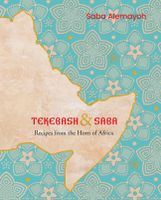Advertisement
Wedding? No. Married? Yes!
Appears in
Published 2023
Marriage, in my mother’s generation, was a carefully curated arrangement made between two families, rather than the outcome of falling in love. Child marriage was a common practice; four of my six aunties were married by 12 years of age. Consummation of the marriage was supposed to be delayed until a girl came of age, denoted by her monthly flower (menstruation). Of course, compliance was based on cultural pressures and was not guaranteed.
It was considered important for the girl bride to be well assimilated with her in-laws, as she would most likely be moving to live in their proximity. The groom’s family usually gave the newlyweds land and money to build their home, and the bride’s family gave cattle. Given the couple usually went from their parents’ home to their marital home, the two families took the responsibility of setting up the couple. The young girl would be raised between her in-laws and her parents until she came of age, spending months at a time at each house. It was considered a good opportunity for her to learn how the husband’s mother ran her household to ensure she did it the same way. God forbid the man had to adapt to a different cooking style! Child marriage has been outlawed in Ethiopia, but continues to a limited degree. Urban Tegaru married slightly older: the arrangements were still made by the two families, with dating openly pre-engagement considered racy.

